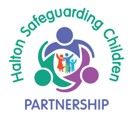Multi-Agency Audits
Halton Safeguarding Children Partnership is responsible for agreeing with relevant organisations in Halton, how they should work together to safeguard and promote the welfare of children and young people.
We have a statutory function to:
- Use data and intelligence to assess the effectiveness of the help being provided to children and families, including early help.
- Undertake multiagency and interagency audits to identify themes and trends.
- Share learning and recommendations for improvement regarding the quality of practice and service provision.
Therefore, we have developed as a partnership a Learning and Improvement Framework (LIF) and an Audit Framework, in which multi-agency audits form part of the learning cycle.
What is a Multi-Agency Audit?
Multi-Agency Audits have a specific focus on a particular area of multi-agency practice and procedure, such as responses to child exploitation, information sharing, mental health, domestic abuse, missing from home and care. Typically, a Multi-Agency Audit involves a small number of cases (approximately 10) within a fixed timeframe (usually within the past 12 months). The audits are detailed in nature and consider several different aspects of multi-agency practice and procedure.
Multi-Agency Audit is one approach HSCP uses to carry out its assurance work, and this type of audit is underpinned by our Learning and Improvement Framework. The audits ensure that HSCP has a view across a child’s journey, with a focus on the effectiveness of safeguarding (i.e. early help, child in need, child protection and child in care).
How are the themes for multi-agency audits identified?
The focus of the audits is determined from a range of sources including:
- the findings of national or local Safeguarding Children Practice Reviews
- priorities agreed within the HSCP Business Plan
- areas of concern emerging from practice, performance data and local information
The intention of HSCP is to carry out audits in a spirit of appreciative inquiry to
“shine a light on what is working well in organisations and potentially engage all stakeholders in building conditions for best practice” (Bellinger and Elliot, 2011)
Multi-Agency Audits provide opportunities for the following:
- For each agency to audit their own practice
- To create a culture of constructive challenge
- To share expertise
- Identify elements of good practice
- To ensure identified areas for improvements are followed up.
- To ensure lessons from audits inform and enhance frontline practice.
What is expected from partner agencies?
All agencies who are involved with a child identified as part of a cohort are expected to respond to HSCP’s request by:
- completing an audit tool including as much detail as possible within the time scales requested
- providing appropriate representation at the audit discussion/review analysis team meeting
- gathering information held on the child’s family.
When completing an audit tool and providing representation at the audit discussion, agencies should feel they are able to be transparent in providing an appraisal of their service’s involvement. This appraisal will ensure information captured is accurate and provide agencies with the opportunity to use this exercise as part of self-assessment to celebrate good practice and identify learning.
What happens afterwards?
Where the Audit Group identifies any urgent actions to be taken because of the audit, these will be tasked to relevant partners for completion.
HSCP produces an anonymised summary report highlighting areas which are working well, areas for development, identified themes and recommendations. This is also presented in summary form (7-minute briefing) and publicised on Partnership briefings.
Service specific actions are progressed by agencies themselves. If during the audit discussion there are concerns about the immediate risk to a child or adult, or unsafe practice is raised, information is escalated to the respective appropriate agency lead for action.

